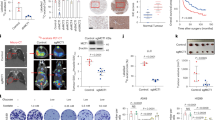Abstract
We studied the mouse NC tumour, a subcutaneously transplanted adenocarcinoma originally of mammary origin. Measurements per g tissue were made of 17 fatty acids (FAs), the combined amounts of n-3, n-6, saturated, unsaturated, and total FAs, and of various FA ratios in the tumour, mammary tissue, spleen, liver and plasma. Compared with mammary tissue from normal mice, tumours of vehicle-treated controls had less of seven of the FAs and more of two FAs. Mice bearing the NC tumour often had changed (usually decreased) amounts of FAs in the 'normal' spleen, liver and plasma, but not in mammary tissue. Treatment with methotrexate (MTX) was studied alone and with indomethacin which can potentiate MTX cytotoxicity. Indomethacin 1.25 mg kg-1 (INDO) increased the amounts of 3/17 tumours FAs and the unsaturated FAs, but reduced 9/17 FAs, the saturated and the unsaturated FAs in 'normal' mammary tissue, and usually had no effect on the FAs of other tissues. MTX 2 or 4 mg kg-1 (MTX 2 or 4 mg) +/- INDO in general partly restored (increased) the amounts of tumour FAs, and reduced the saturated/unsaturated FA ratio. In the 'normal' spleen and plasma also, but not in the liver, MTX 2 mg generally somewhat restored the FA composition. However, as in the liver, the spleen 20:4 and 22:6 (which form prostaglandins and lipid peroxides) did not increase in the presence of INDO. With MTX 4 mg, some of the plasma and liver FAs decreased, in contrast to the tumour. There was generally no evidence of MTX potentiation by INDO. These results are discussed in relation to carcinogenesis, cachexia, and the response to treatment.
This is a preview of subscription content, access via your institution
Access options
Subscribe to this journal
Receive 24 print issues and online access
$259.00 per year
only $10.79 per issue
Buy this article
- Purchase on Springer Link
- Instant access to full article PDF
Prices may be subject to local taxes which are calculated during checkout
Similar content being viewed by others
Author information
Authors and Affiliations
Rights and permissions
About this article
Cite this article
Yazici, Z., Tavares, I., Stamford, I. et al. Changes in tissue fatty acid composition in murine malignancy and following anticancer therapy. Br J Cancer 65, 163–170 (1992). https://doi.org/10.1038/bjc.1992.35
Issue Date:
DOI: https://doi.org/10.1038/bjc.1992.35
This article is cited by
-
The role of mediastinal adipose tissue 11β-hydroxysteroid d ehydrogenase type 1 and glucocorticoid expression in the development of coronary atherosclerosis in obese patients with ischemic heart disease
Cardiovascular Diabetology (2012)
-
Fatty acid composition of 19 species of fish from the black sea and the Marmara Sea
Lipids (1999)
-
Indomethacin augmented antitumor activity of 5-fluorouracil in meth-a induced mice
International Journal of Clinical Oncology (1996)



